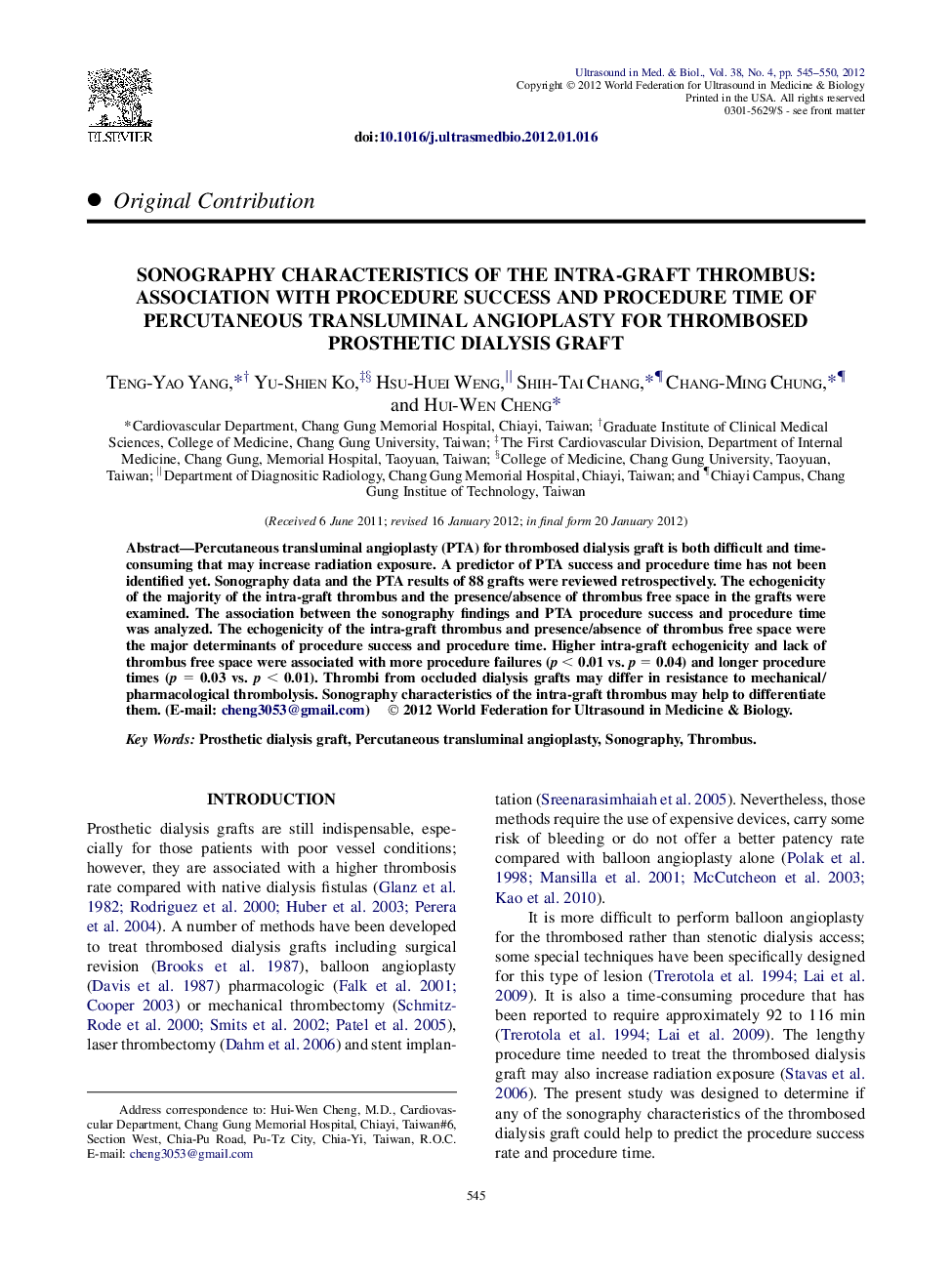| Article ID | Journal | Published Year | Pages | File Type |
|---|---|---|---|---|
| 1760603 | Ultrasound in Medicine & Biology | 2012 | 6 Pages |
Abstract
Percutaneous transluminal angioplasty (PTA) for thrombosed dialysis graft is both difficult and time-consuming that may increase radiation exposure. A predictor of PTA success and procedure time has not been identified yet. Sonography data and the PTA results of 88 grafts were reviewed retrospectively. The echogenicity of the majority of the intra-graft thrombus and the presence/absence of thrombus free space in the grafts were examined. The association between the sonography findings and PTA procedure success and procedure time was analyzed. The echogenicity of the intra-graft thrombus and presence/absence of thrombus free space were the major determinants of procedure success and procedure time. Higher intra-graft echogenicity and lack of thrombus free space were associated with more procedure failures (p < 0.01 vs. p = 0.04) and longer procedure times (p = 0.03 vs. p < 0.01). Thrombi from occluded dialysis grafts may differ in resistance to mechanical/pharmacological thrombolysis. Sonography characteristics of the intra-graft thrombus may help to differentiate them.
Related Topics
Physical Sciences and Engineering
Physics and Astronomy
Acoustics and Ultrasonics
Authors
Teng-Yao Yang, Yu-Shien Ko, Hsu-Huei Weng, Shih-Tai Chang, Chang-Ming Chung, Hui-Wen Cheng,
